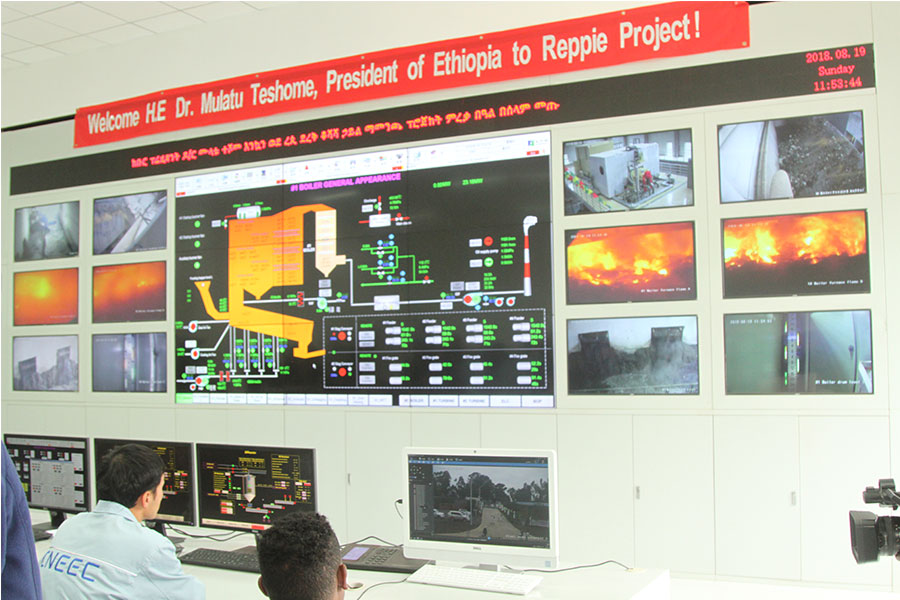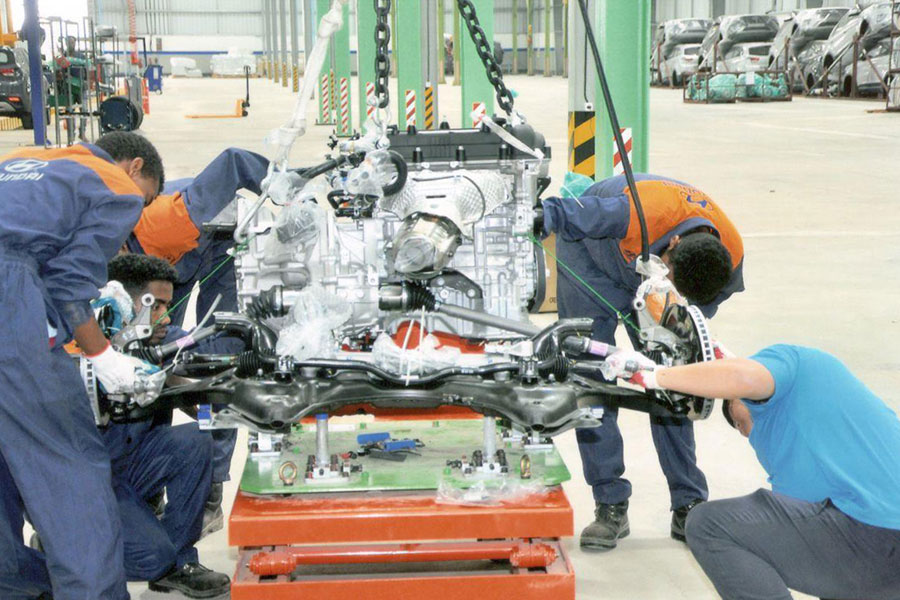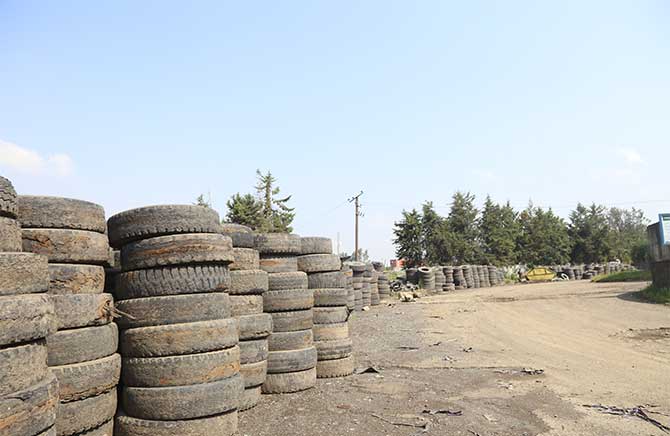
Radar | Jul 06,2019
Over the last few decades, Ethiopia had launched several tree planting schemes including one led by an august sounding institution, the Ethiopian Millennium Secretariat, that envisioned planting nearly two billion trees in 2007, but none surpass the ambition of planting four billion tree seedlings announced by this government.
The sweeping project leaves many questions unanswered. Are there even any nurseries, both government-owned and private, that can propagate and supply that many seedlings in the country? What are the plant species selected for planting? How do they get transported from the nurseries where they are grown to where they will be planted? How will they be maintained once planted? How is the government financing the project?
The Ethiopian News Agency reported that “4.5 billion tree seedlings [were] planted during rainy seasons [between 2000 and 2015, but only 20pc to 30pc of the seedlings survived and grew.” The very fact that that only a few seedlings survived is worrisome and raises questions about the viability of the current effort.
Information is hard to come by in Ethiopia and this project is no exception. But the state-owned and even the private media have joined the cacophony of noise cheering the campaign to plant trees. With the usual bluster, the government is leading the clamour and has announced a plan to plant 200 million saplings in 12 hours, on Monday, July 29, 2019, to enter the Guinness Book of World Records.
The noble purpose of planting trees to fight climate change and restoration of degraded landscapes of Ethiopia has suddenly been overtaken by a frivolous ambition that contributes nothing to the final outcome of the project. It is a typical response of a government that has led the nation to flounder repeatedly into distress by setting unachievable and grandiose goals. This may be another occasion for another possible disappointment.
A website designated to provide public information does not list the names of plant species or the locations of the nurseries. There is no information as to where the trees are planted and by whom. The website claims that nearly 2.6 billion seedlings are planted to date of the close to 4.8 billion seedlings grown. There are four categories of seedlings listed: agroforestry, tree species, bamboo and others, but nothing else.
Most popular ‘agroforestry’ plants are species of pines, spruces, larch and poplar; and are mostly imports rather than native trees. Apparently, this category includes fruit trees such as mangoes, avocados and peach trees, along with leguminous plants that are coupled in farmlands. It also includes plants selected for riparian corridors and as erosion control material. And then there is the bamboo category. The ‘tree’ categories can be any number of trees from exotic species to indigenous trees, ranging from eucalyptus to acacia species that are growing in the nurseries. The ‘other’ category includes grasses that are primarily used for cattle fodder, rather than reforestation purpose.
How these different planting parameters will be implemented under this project is not very clear. Just the planning and logistics involved in sorting out the deliveries of plants to specific locations, planting area preparations, the proper installation of seedlings in planting holes and the necessary maintenance and monitoring in caring for the plantings are not addressed.
Who in the local community is tasked with implementing this project? Has there been any training conducted to raise the skill levels of those who are participating in the endeavor? Have maps been developed as to where the tree planting project is to be carried out? These and many other pertinent questions have been left unanswered.
Planting trees for the sake of putting so many samplings in the ground a day without regard to habitat conditions, or for the purpose of breaking a world record is foolish at best, and costly in terms of establishing trust between policymakers and citizens. Developing a serious and considered evaluation of proposed projects is paramount in establishing trust between the governed and the rulers.
Lurching from one unfinished project to the other and setting unrealistic goals is a recipe for disaster and erodes the confidence that people have in their government. Just in the last year or so, we have witnessed the initiation of so many megaprojects that can potentially put the nation on a trajectory of failure purely from the economic stand point.
Billions of Birr is pledged for projects that add very little to the improvement of the quality of life of citizens, but on the other hand, the nation gets saddled with defective assets that deprive them of reaping the benefits of public treasures that are squandered on ‘white elephant’ projects. While planting 4 billion trees is laudable, the rushed and amateurish way it is being implemented diminishes its usefulness and almost guarantees a substandard outcome.
Despite the lofty ambitions and promises, development projects in Ethiopia have faced insurmountable technical and financial problems exposing the danger of hurrying along without planning. Just examining the often touted 4.5 billion dollar Djibouti-Addis railway system suffices to drive the point home. Amid perennial delays, power outages and other technical issues that continually plague it, a major derailment recently shut down the entire system for three weeks and it took nearly three months to resume transport service.
It now operates with limited capacity and schedules as to put into question the usefulness of the system to the nation’s development. To make matters worse, the railway design was not planned with efficient alignment to the industrial zones.
The same problem of grandiose goal setting and blind ambition that has plagued policymakers lies in full public view from one end of the country to the other. It is much hoped that our leaders can capitalize on this very worthwhile initiative of tree planting and mobilize their resources to implement it properly.
PUBLISHED ON
Jul 27,2019 [ VOL
20 , NO
1004]


Radar | Jul 06,2019

Radar | Jan 26,2019

Viewpoints | Oct 26,2024

Fortune News | Apr 13,2019

Radar | Aug 24,2019

Fortune News | May 02,2020

Fortune News | Mar 23,2019

Fortune News | Feb 16,2019


Fortune News | May 29,2021

Dec 22 , 2024 . By TIZITA SHEWAFERAW
Charged with transforming colossal state-owned enterprises into modern and competitiv...

Aug 18 , 2024 . By AKSAH ITALO
Although predictable Yonas Zerihun's job in the ride-hailing service is not immune to...

Jul 28 , 2024 . By TIZITA SHEWAFERAW
Unhabitual, perhaps too many, Samuel Gebreyohannes, 38, used to occasionally enjoy a couple of beers at breakfast. However, he recently swit...

Jul 13 , 2024 . By AKSAH ITALO
Investors who rely on tractors, trucks, and field vehicles for commuting, transporting commodities, and f...

Jul 5 , 2025
Six years ago, Ethiopia was the darling of international liberal commentators. A year...

Jun 28 , 2025
Meseret Damtie, the assertive auditor general, has never been shy about naming names...

Jun 21 , 2025
A well-worn adage says, “Budget is not destiny, but it is direction.” Examining t...

Jun 14 , 2025
Yet again, the Horn of Africa is bracing for trouble. A region already frayed by wars...